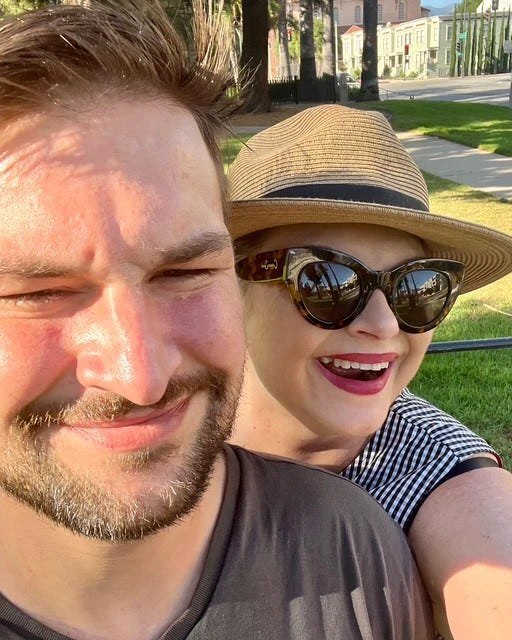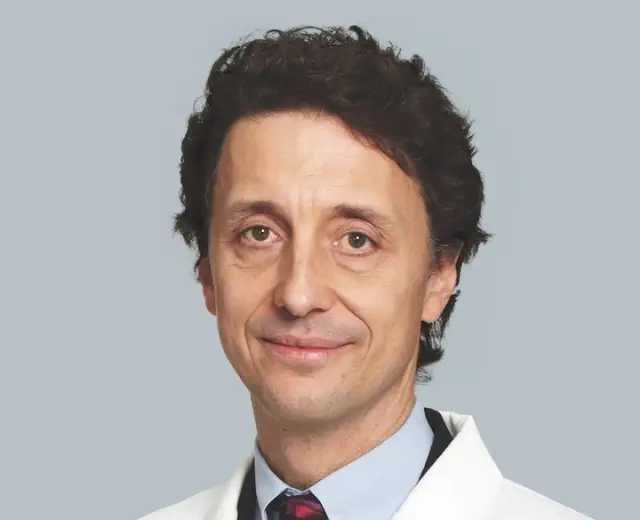In October 2020, Susan Ousterman tragically lost her son, Tyler, due to an overdose involving fentanyl, heroin, and xylazine, following years of her relentless efforts to support him in overcoming his struggles.
She's not alone. Yearly, over 100,000 people die from drug overdose deaths in the United States, with almost 70% of these deaths caused by fentanyl and other synthetic opioids.
Throughout the 2024 election, Trump promised to end the fentanyl crisis, pledging to crackdown on illegal immigration and strengthen border control. For many grief-stricken families, his messaging resonated.
"Ousterman mentions, 'It presents a straightforward and definitive approach.' He emphasizes this is particularly important at a moment when many other leaders have failed to address the mental health and overdose epidemic, or have neglected to recognize it in their campaign agendas."
"Kassandra Frederique, the executive director of the Drug Policy Alliance, a national nonprofit organization dedicated to ending the war on drugs, states, 'Voters are truly frustrated with unfulfilled promises. They are disheartened and yearning for a real change.'"
Frederique warns that Trump's strategy might not provide the assistance that some families are anticipating. She contends that his attempts to fortify the southern border during his initial term have "only increased the risks in the area."
Experts in drug and public health with whom we consulted concur that it is essential to move away from the politicization of fentanyl use. Instead, they emphasize the importance of redirecting the dialogue toward effective strategies for addressing addiction, a topic that continues to spark significant debate.
Although Ousterman views border control as part of the overall issue, she believes that the insufficient access to mental health care and treatment poses a more significant challenge. Other mothers, such as Cara Wykowski, who tragically lost her eldest son Eric to an accidental drug overdose in late 2023, advocate for prioritizing harm reduction in any proposed interventions.

View pictures in App save up to 80% data.
Understanding the Fentanyl Crisis: An Overview
Fentanyl is a synthetic opioid drug that is used to relieve pain, often in medical settings under doctor supervision. But in relation to the opioid crisis, people are often referring to street fentanyl – an illicitly manufactured fentanyl. Most illegal fentanyl is shipped from China to Mexico and Canada, and then smuggled across the border into the United States.
In some parts of the country, particularly the Northeast and Midwest, fentanyl is mixed into the heroin and counterfeit pill supply. So, not everyone who consumes fentanyl knows they are taking it.
In 2022, more than 200 lives were lost every day to fentanyl. Drug overdose deaths decreased by 3% in 2023, marking the first annual decrease since 2018, but states like Alaska, Washington, and Oregon experienced notable increases of at least 27%.
The issues of immigration, border security, and the opioid epidemic are becoming increasingly intertwined.
Despite Trump's focus on securing the border, studies show that 86.4% of people convicted of fentanyl smuggling are U.S. citizens. Keith Humphreys, a professor of psychiatry and behavioral sciences at Stanford University, says the amount of fentanyl being smuggled into the U.S. is "too small an amount to keep out." Given its high potency, only a small amount of fentanyl is needed to produce an effect. Just 2 milligrams — roughly the size of a few grains of sand — is enough to cause an overdose. All American consumption of illegal fentanyl — estimated to be in the single digit metric tons — could fit on a single truck.
Frederique refers to linking drug legislation with border control strategies as an "age-old tactic."
"Individuals have mourned the loss of their dear ones. There’s a desire to find someone to hold accountable," she explains. "Currently, the focus is on illegal immigration. Five years back, it was the pharmaceutical executives, wasn’t it? It’s always about the person or group you choose to point fingers at." However, some families that collaborate with the Drug Policy Alliance have voiced their dissatisfaction regarding "the way their loved ones' deaths have become politicized."
Wykowski argues that when illegal immigration intersects with the opioid crisis, individuals often overlook the situation as a matter of “systemic failure.”
At first, Wykowski had an “abstinence-only” mindset when it came to drug use, but when she learned about harm reduction, she was finally able to give her son the help he would accept. Harm reduction reduces the risks associated with drug use, including overdose and the spread of infectious diseases, by providing free syringe service programs, overdose prevention sites, fentanyl tests, naloxone kits and training and sterile injection or smoking equipment.
Wykowski says that policies like California Proposition 36, which passed in November and increases criminal penalties for certain drug offenses, create a “revolving door back to prison." Her son, Eric, had been in county jail numerous times and to prison once while struggling with addiction.
"Frederique explains, 'Many individuals fear that reaching out for assistance might lead to being arrested.'"
Eric died in San Francisco, where Mayor London Breed said in 2023 that it is easier to access drugs than it is to access treatment.
Although the city added about 400 treatment beds from 2021-2024, the Department of Public Health estimated that during the second half of 2023, 15-20% of its short-term residential mental health beds went unused due to staffing shortages.
“I recall a time when we were looking for mental health services. The wait for an appointment was around 12 weeks,” Wykowski shares. “Eventually, you start to lose hope and just carry on. Instead, you turn to self-medication.”
After successfully locating a treatment center, Eric managed to decrease his fentanyl consumption over the course of three months. He was employed full-time as a plumber's apprentice and lived in a sober-living facility in Pasadena when he suffered an overdose during his first trip home for Thanksgiving.
“It was even more painful since he had reclaimed his life,” Wykowski explains. “I recognize the untapped potential. We need to address this as a medical issue and put an end to the stigma.”
She emphasizes that the root causes of drug use must be tackled, including the need for housing, broader treatment options, and improved access to mental health services. “Punitive measures are ineffective. Shouldn’t we focus on treating individuals and restoring their dignity, helping them avoid turning to these substances? That’s where I believe increased funding should be directed.”

View pictures in App save up to 80% data.
Studies show that harm reduction is effective.
Dr. Kimberly Sue, an assistant professor at the Yale University School of Medicine in the Addiction Medicine Program, has witnessed numerous patients succumb to opioid overdoses.
Sue states that it’s much simpler to blame alleged mules than to examine the underlying public policies.
Currently, 80% of U.S. counties do not have access to methadone treatment, according to Sue. Methadone is administered through opioid treatment programs called OTPs, many of which have extensive waiting lists. Patients may have to travel one or two hours to reach a clinic, and that medication has to be taken in front of a nurse or doctor every day.
The drug, however, is lifesaving and can help individuals sustain recovery. Working as a long-acting full opioid agonist, methadone reduces opioid craving and withdrawal. Expanding access could transform the treatment landscape.
Sue elaborates, “In the case of a heart attack, my first step would be to prescribe you six new medications, which you would likely need to continue for the remainder of your life. Similarly, if you were to experience an opioid overdose, I would initiate treatment with methadone to significantly reduce your risk of a repeat incident, possibly for life. This is a straightforward decision. However, the stigma associated with these medications complicates matters for both me and my patients, making acceptance of the treatment challenging.”
The bipartisan Modernizing Opioid Treatment Access (MOTA) Act, which was introduced in 2023 but has yet to pass, would allow addiction medicine doctors like Sue to prescribe methadone in a regular clinic, where patients could pick it up at a regular pharmacy.
Do harm reduction programs also help reduce fentanyl usage?
Frederique notes that whenever a healthcare intervention is presented, it provides individuals with a chance to choose to discontinue.
Most syringe service programs (SSPs), which provide sterile injection equipment, offer referrals to medication-assisted treatment; new SSP users are five times more likely to enter treatment, and three times more likely to stop using drugs than those who don’t use the program, according to the CDC.
Frederique is of the opinion that the discussion should shift focus from supply to demand.
"Individuals are facing significant challenges and often struggle to find alternative coping mechanisms," she remarks. "What can we do to prevent them from descending into a state of hardship?"
No parent should ever have to experience the heartbreak of losing a child to an overdose.
While Trump has previously shown support for public health initiatives, it is yet unclear whether his position has shifted.
Potential cuts to Medicaid — "the backbone of treatment in a lot of our states," according to Humphreys — could pose a greater risk to limiting access to harm reduction and treatment. Nine states have trigger laws that would automatically end their Medicaid expansions if federal funding falls below 90% (80% for Arizona), putting approximately 3.7 million adults at risk of losing their health coverage.
Losing a child is an incredibly challenging experience, Wykowski remarks, as it fundamentally contradicts the natural progression of life.
“However, when you experience the loss of a child due to substance use,” she shares, “the depth of your grief often feels diminished or overlooked, as it's a topic many prefer to avoid.”

View pictures in App save up to 80% data.
"Ousterman warns that if we do not tackle the pervasive disenfranchised grief stemming from these tragic losses, America may soon face a new epidemic. He emphasizes that effective leadership must recognize the shortcomings of our current approach, focus on preserving lives, update existing systems, and restore faith in government institutions in order to significantly alleviate the sorrow experienced by many Americans today."










